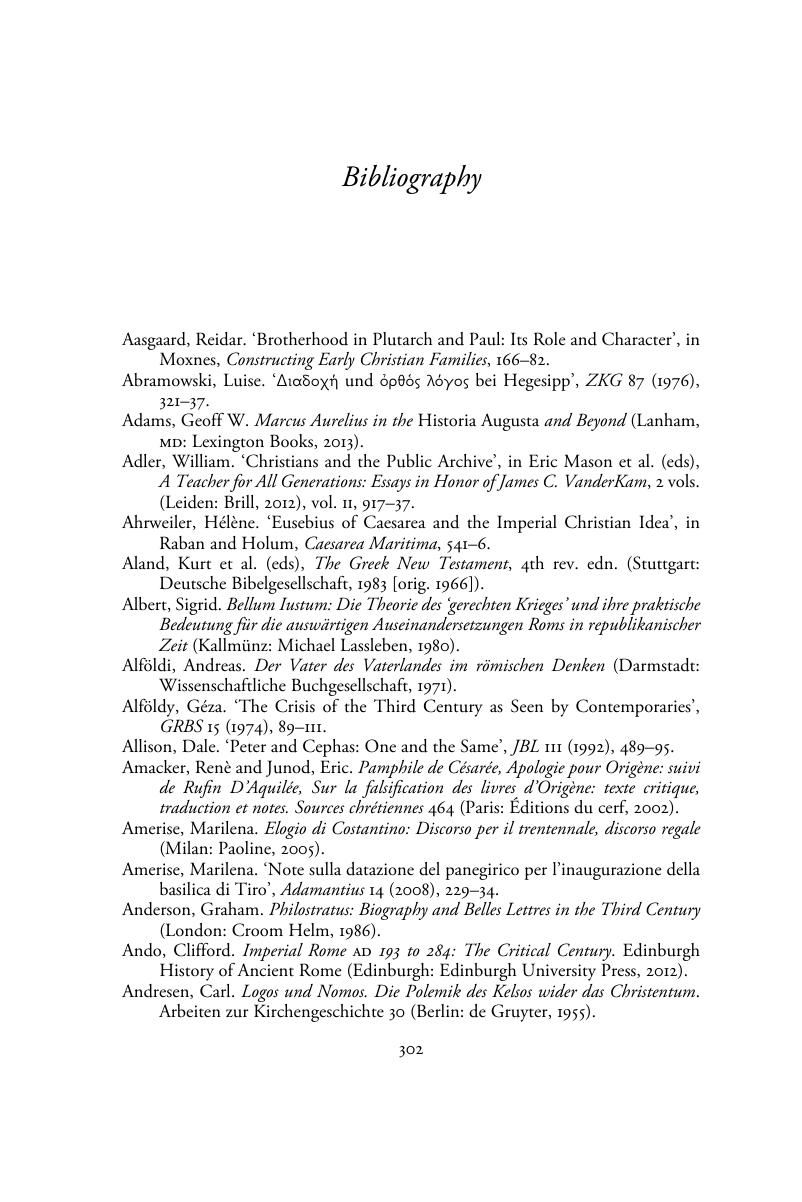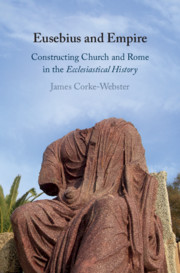Bibliography
Published online by Cambridge University Press: 04 January 2019
Summary

- Type
- Chapter
- Information
- Eusebius and EmpireConstructing Church and Rome in the <I>Ecclesiastical History</I>, pp. 302 - 339Publisher: Cambridge University PressPrint publication year: 2019

